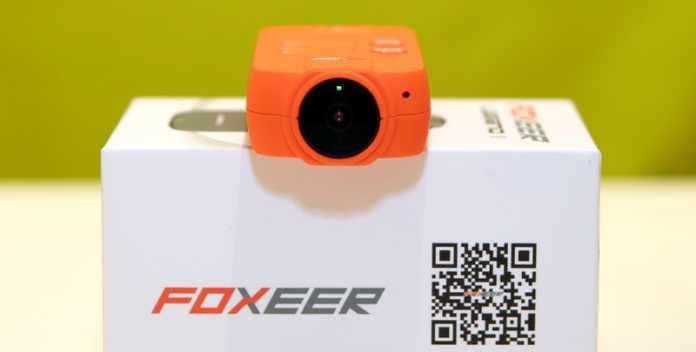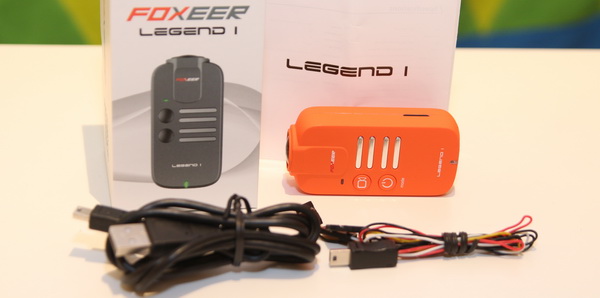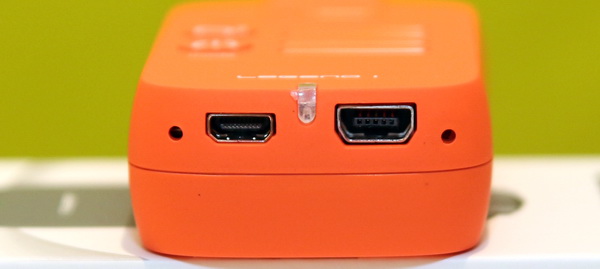It seems I have reached the end of my small form-factor camera road map. This Foxeer Legend 1 is the last model from the “Mobius family” which I have to review. It will definitely be hard for this Foxeer camera to fight with the features of the new RunCam 2.
In my opinion, the biggest challenge of the FPV camera manufacturers is to keep the size and the weight at the lowest possible values without compromising the image quality. They have to make a good balance between autonomy and weight, higher capacity battery means more weight and less flight time.
GoPro-like cameras are suitable for 350 mm or even larger quadcopters (DJi Phantom clones), but what can we do with our smaller racing quads? They need a smaller and ultra-lightweight camera with an aerodynamic shape. I can’t tell which manufacturer introduced this box that matches the form-factor, but it was a great idea. Currently, there are many similar models like the Foxeer Legend 1 in this market segment, and I’m trying to find which one is the best, if there is one :)
The biggest disadvantage of the non-standard form factor is its compatibility with mounting accessories and gimbals. It will be hard to find a brushless gimbal that fits all kinds of camera shapes.
Foxeer Legend 1 review
Harvey offered this product from SurveilZone for an honest review; thanks again for the possibility of testing this camera. I opted for orange color but is also available in black, green, and red. The vivid colors make it more visible and easy to find when is accidentally lost in the flight zone (especially in tall grass).
Foxeer Legend 1: First Impressions
The Foxeer Legend 1 camera comes in a small and hard carton box which protects it very well during overseas shipping. I found in the box, besides the camera and its user manual, only two cables. There are no mounting accessories or lens caps included.
At first sight, the camera looks amazing and it has a good rubber touch feeling. On the front of the camera is the center positioned the 166-degree wide angle lens and the microphone. On the rear part are two tiny connectors (micro HDMI and mini USB), status LED, charging LED, and reset button hole.
The two control buttons are located on the top of the camera near the heat sink which becomes pretty hot after a short time of usage, so you should not cover it.
By long pressing the “Power/Mode” button, the camera can be turned ON or OFF. When is powered ON, using the same button, the camera can be switched between video mode 1, video mode 2, and photo mode. By default, Mode 1 is 1080p@60fps, and Mode 2 is 720p@120fps. Using the “Shutter” button can start and stop the video recording or the photo shooting.
Foxeer Legend 1: Features and specifications
- Ambarella A7LS imaging processor (SoC);
- 16MP Sony Exmor R BSI CMOS image sensor (1/2.3″);
- Approximately same hardware as it has the popular Xiaomi Yi Xiaoyi action camera;
- F2.5 166 degrees wide angle lens;
- Configuration utility;
- Time-lapse and Countdown mode;
- 3D noise reduction;
- MCTF motion compensation;
- Video-out, UAV, and external power via mini USB;
- Digital HD video out via micro HDMI;
- Max video resolution: 1206P@30fps (2304 x 1296);
- Max frame rate per second: 120 at 720p;
- Optimal video resolution: 1080p@60fps;
- Up to 16MP photo resolution (4608 x 3456);
- Available colors: black, orange, red and green;
- Dimension: 75mm (L), 37.5mm (W) and 19.8mm (H);
- Weight: 49g;
The servo cable is the strength of this camera, none of my other cameras has this feature. It allows not just getting the composite video signal out from the camera but also remotely stopping and starting the video recording. The mini-USB cable has three pairs of wires:
- Yellow – Composite video out;
- Red – Power input for the camera;
- White – Remote control signal (start/stop record, take photo);
When I tried to test the FPV out of the camera, it didn’t work. Firstly I thought that is something wrong with the camera but, as I am lucky, it was only the servo cable. One of the ground wires from the mini USB connector was poorly soldered, and I fixed it quickly.
Foxeer Legend 1: Configuration tool
Unfortunately, this Legend 1 camera doesn’t have Wi-Fi, so you must connect it to your computer with the included mini-USB cable.
Through the Foxeer configuration tool can be made some system settings, working modes, and photo and video quality fine-tuning. The tool also allows setting the ISO value (Auto, 100-1600), metering modes (center, spot, or multi), white balance, and sharpness level.
Foxeer Legend 1: Image quality
Adopting the same hardware as the popular Xiaomi Yi camera, I thought the picture quality should be very good. The 16MP Sony CMOS image sensor allows up to 4608 x 3456 photo resolution. In my opinion, this Foxeer Legend 1 has the best photo quality, at least in good light condition, among of all the small quadcopter cameras that I’ve tested.
As we are dealing with an FPV camera, the most important factors are image quality and video out latency. As you can see on my test video, the video quality is pretty good on default settings. The 166° lens offers a vast field of view, much larger than its biggest competitor, the RunCam 2 HD.
Sadly, in terms of video out latency, the Foxeer Legend 1 camera does not excel. I’m afraid that the 100ms delay can be a problem when it is being used as first-person view camera on racing quadcopters. I definitely will keep my 800TVL camera on the Runner 250(R) and I will use this Legend 1 as a secondary camera.
To make a direct comparison between the RunCam2 and this Foxeer Legend 1, I plan to install both cameras on the same gimbal next to each other. I will have to improvise a little, but I hope to get it right :)
Pricing and availability
For those who are interested in this nice FPV camera, it can be ordered from SurveilZone. I have found on their website another interesting product, a Mini DVR for FPV, which I’ve been searching for a while. I will probably order one or ask Santa to bring me one :).








Would you recommend the Foxeer cam over the RunCam 2??